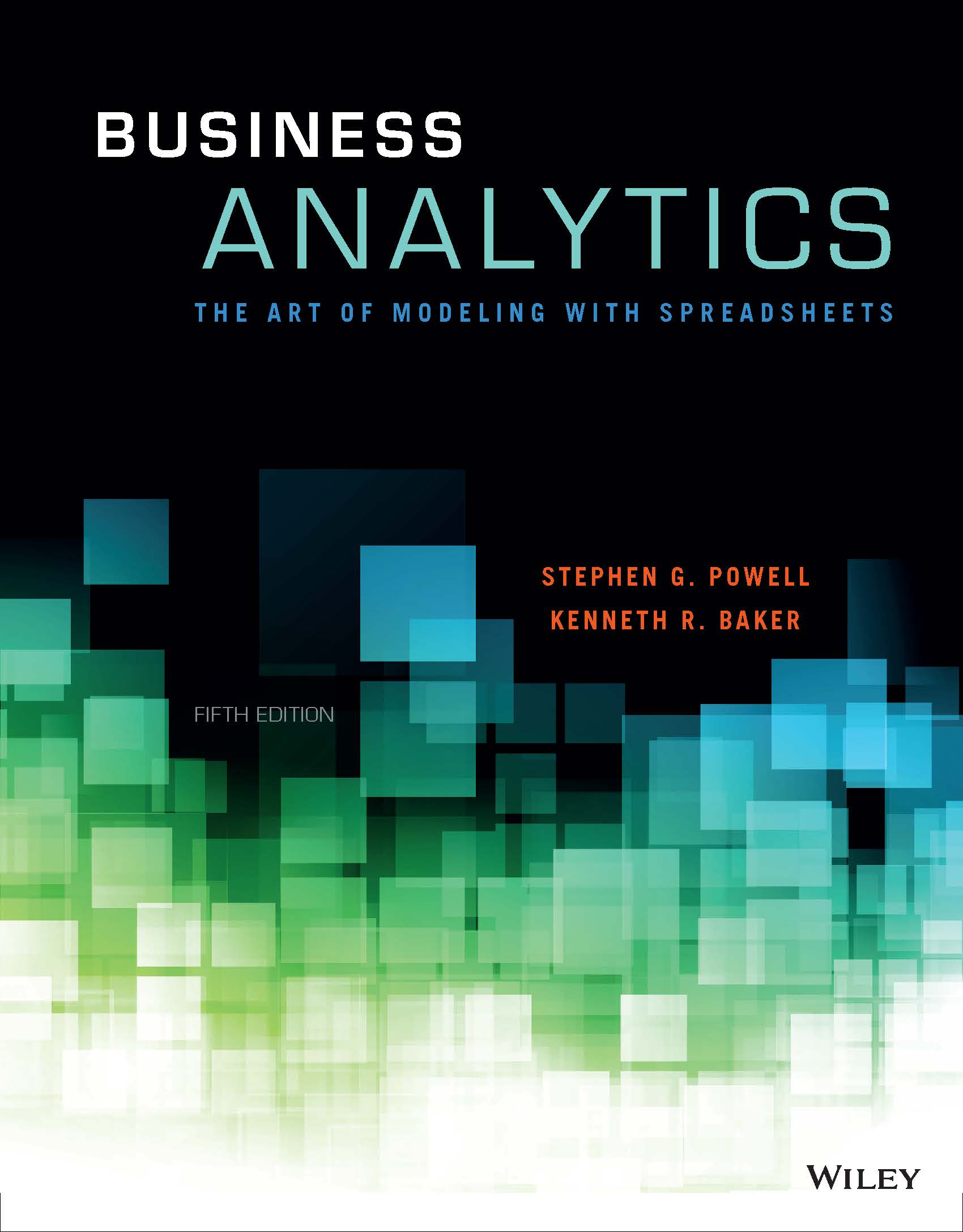About the Book
 This is a book for business analysts about modeling. A model is a simplified representation of a situation or problem, and modeling is the process of building, refining, and analyzing that representation for greater insight and improved decision making. Almost anyone who uses spreadsheets in business has been involved with models and can benefit from formal training in the use of models.
This is a book for business analysts about modeling. A model is a simplified representation of a situation or problem, and modeling is the process of building, refining, and analyzing that representation for greater insight and improved decision making. Almost anyone who uses spreadsheets in business has been involved with models and can benefit from formal training in the use of models.
Models also play a central role in management education. By using models, a business student can acquire a deep understanding of the various functional areas of business. But to fully understand the implications of these models, a student needs to appreciate what a model is and how to learn from it. Our book provides that knowledge.
With the spread of personal computers and electronic spreadsheets, managers and analysts can build their own models and produce their own analyses. This new kind of modeling is known as end-user modeling. In this environment, it becomes important to use time wisely in the modeling process. This book is designed to improve modeling efficiency by focusing on the most important tasks and suggesting how to avoid unproductive steps. This book is also designed to improve modeling effectiveness by introducing the most relevant analytic methods and emphasizing procedures that lead to the deepest business insights.
New in the Fifth Edition
We have changed the title of this edition from Management Science to the more widely recognized term Business Analytics. This term has recently become popular to describe a wide range of quantitative fields, including classical statistics, data exploration and data mining, management science, and modeling.
The major change in this edition is to the organization of Chapter 6 on data mining. Many data mining textbooks stress the mathematical details of the algorithms. In contrast, our presentation emphasizes the broad set of skills necessary to carry out a data mining project. A basic understanding of the algorithms is necessary, but equally important are skills such as recognizing and dealing with overfitting and tailoring the output measures to the problem at hand. To communicate these skills more effectively, we have reorganized the chapter by starting with a single algorithm and several applications. Then, more algorithms for both classification and prediction are introduced in separate sections and applied to a single data set. As in the previous edition, we use the software XLMiner to support both data exploration and data mining. XLMiner is one component of the integrated software suite Analytic Solver Platform, which we use throughout the book.
Beyond the capabilities of XLMiner, several features of Analytic Solver Platform have been corrected or changed, and we have updated our coverage accordingly. Excel itself has been updated with the advent of Office 2016, and we have made corresponding changes in our exhibits and narratives. Further changes in Excel or in Analytic Solver Platform will be reflected promptly in the software that accompanies the text and in electronic versions of the Fifth Edition.
To the Reader
Modeling, like painting or singing, cannot be learned entirely from a book. However, a book can establish principles, provide examples, and offer additional practice. We suggest that the reader take an active learning attitude toward this book. This means working to internalize the skills taught here by tackling as many new problems as possible. It also means applying these skills to everyday situations in other classes or on the job. Modeling expertise (as opposed to modeling appreciation) can be acquired only by doing modeling. There is no substitute for experience.
Software Accompanying the Text
Users of the Fifth Edition have access on this website to spreadsheet files for all the models presented in the text using the Text Files link. Users also have access to Analytic Solver Platform for Education, an integrated software platform for sensitivity analysis, optimization, data mining, decision trees, and simulation. Access is available to users either through their course instructor or Frontline Systems (email academic@solver.com or call (775) 831-0300).
Table of Contents
The book is organized into four parts:
Modeling with spreadsheets (Chapters 1–4)
Data analysis (Chapters 5–7)
Optimization (Chapters 8-12)
Probabilistic models and simulation (Chapters 13–15)
- Introduction
- Modeling in a Problem-Solving Framework
- Spreadsheet Engineering
- Analysis Using Spreadsheets
- Data Exploration and Preparation
- Classification and Prediction Methods
- Short-Term Forecasting
- Nonlinear Optimization
- Linear Optimization
- Optimization of Network Models
- Integer Optimization
- Optimization of Nonsmooth Models
- Decision Analysis
- Monte Carlo Simulation
- Optimization in Simulation
Detailed Table of Contents (PDF file)